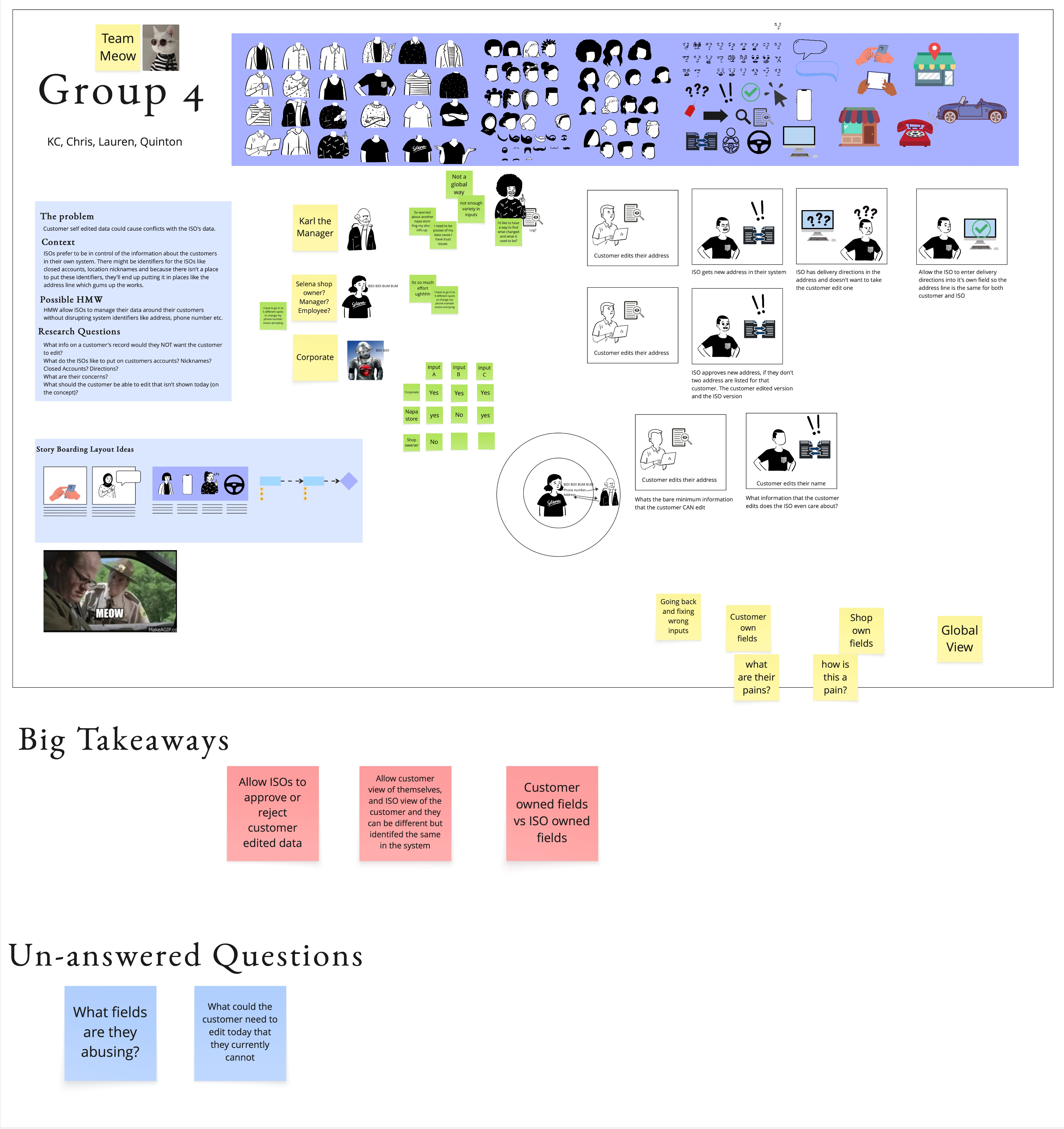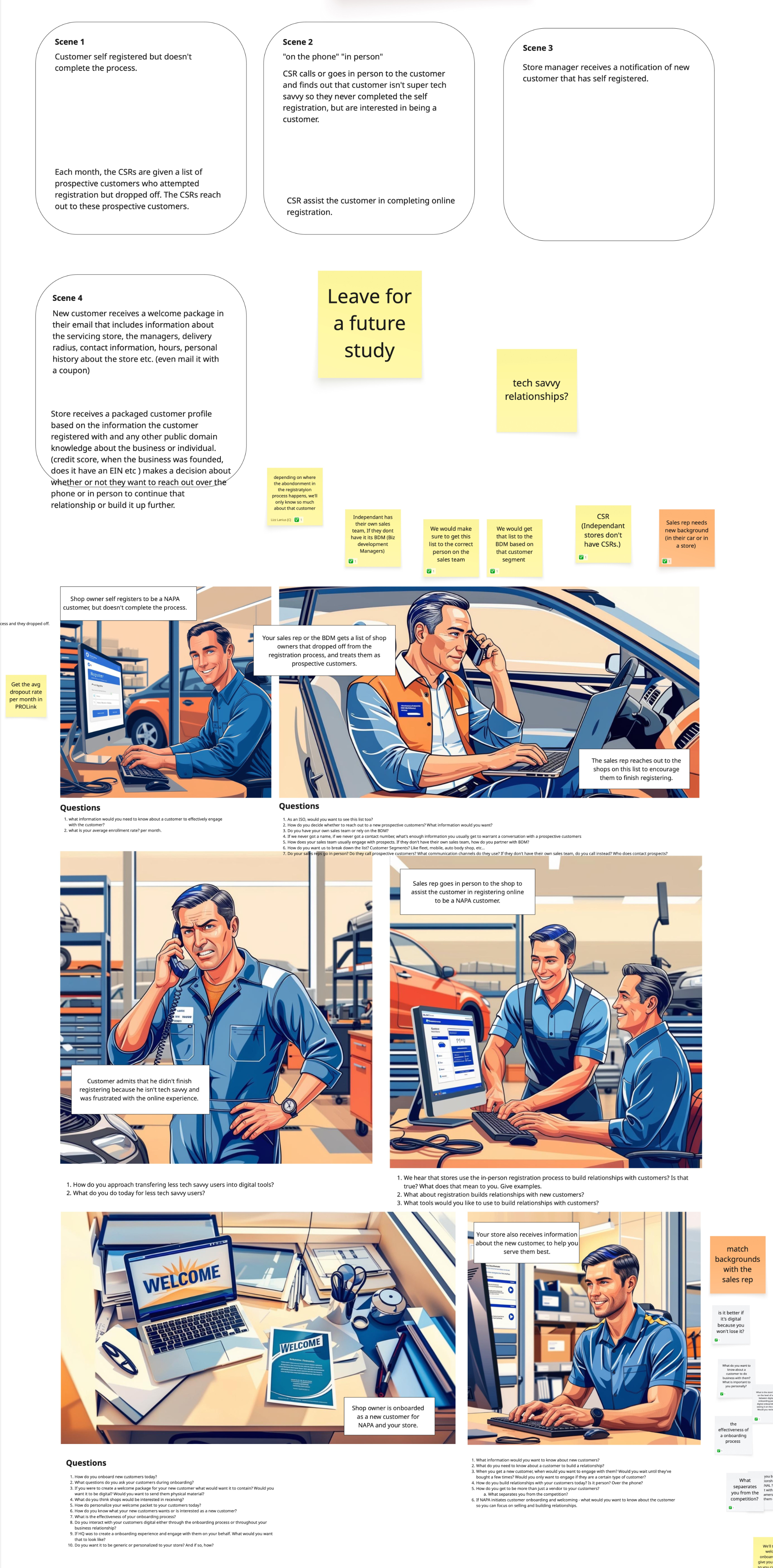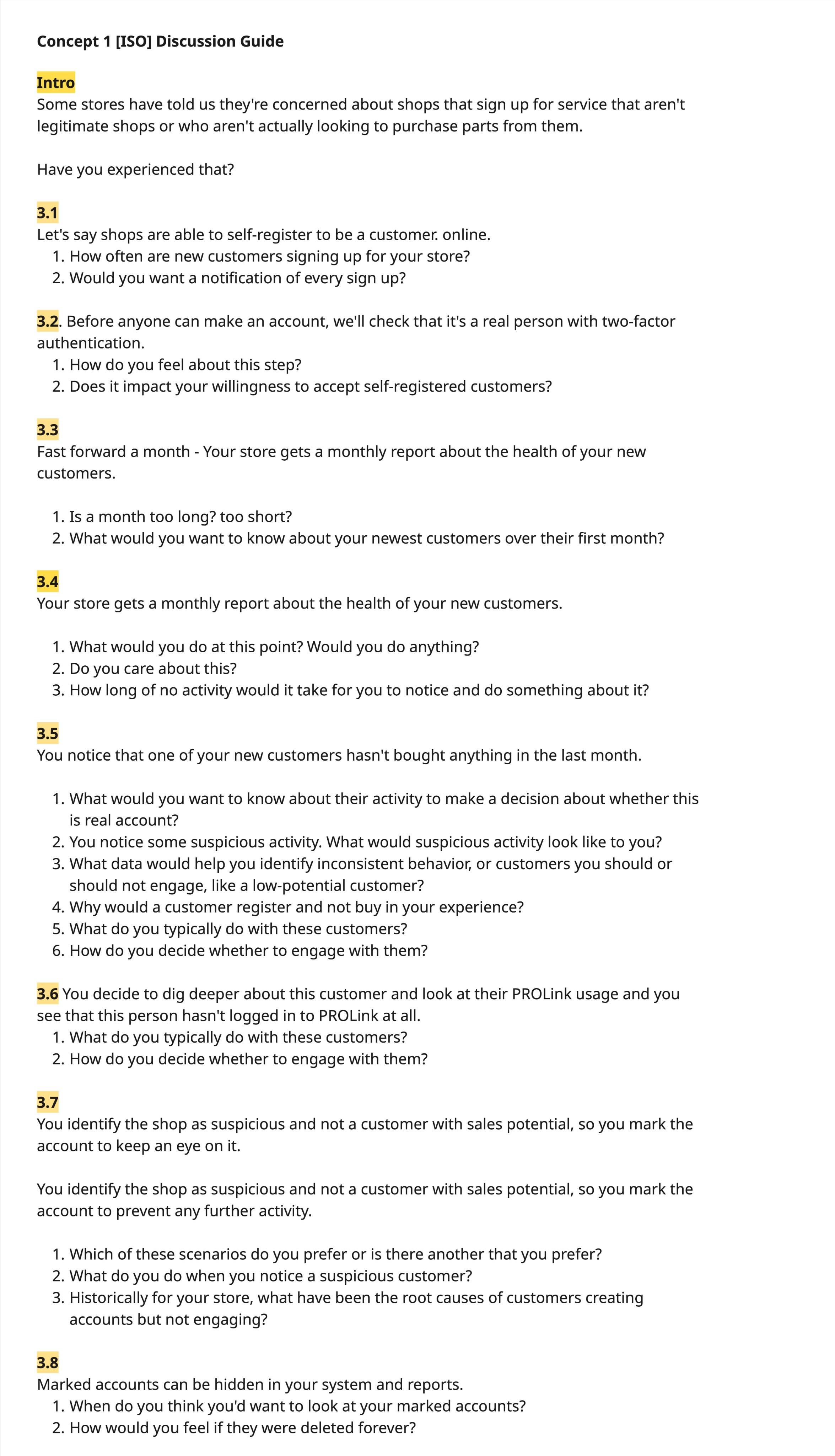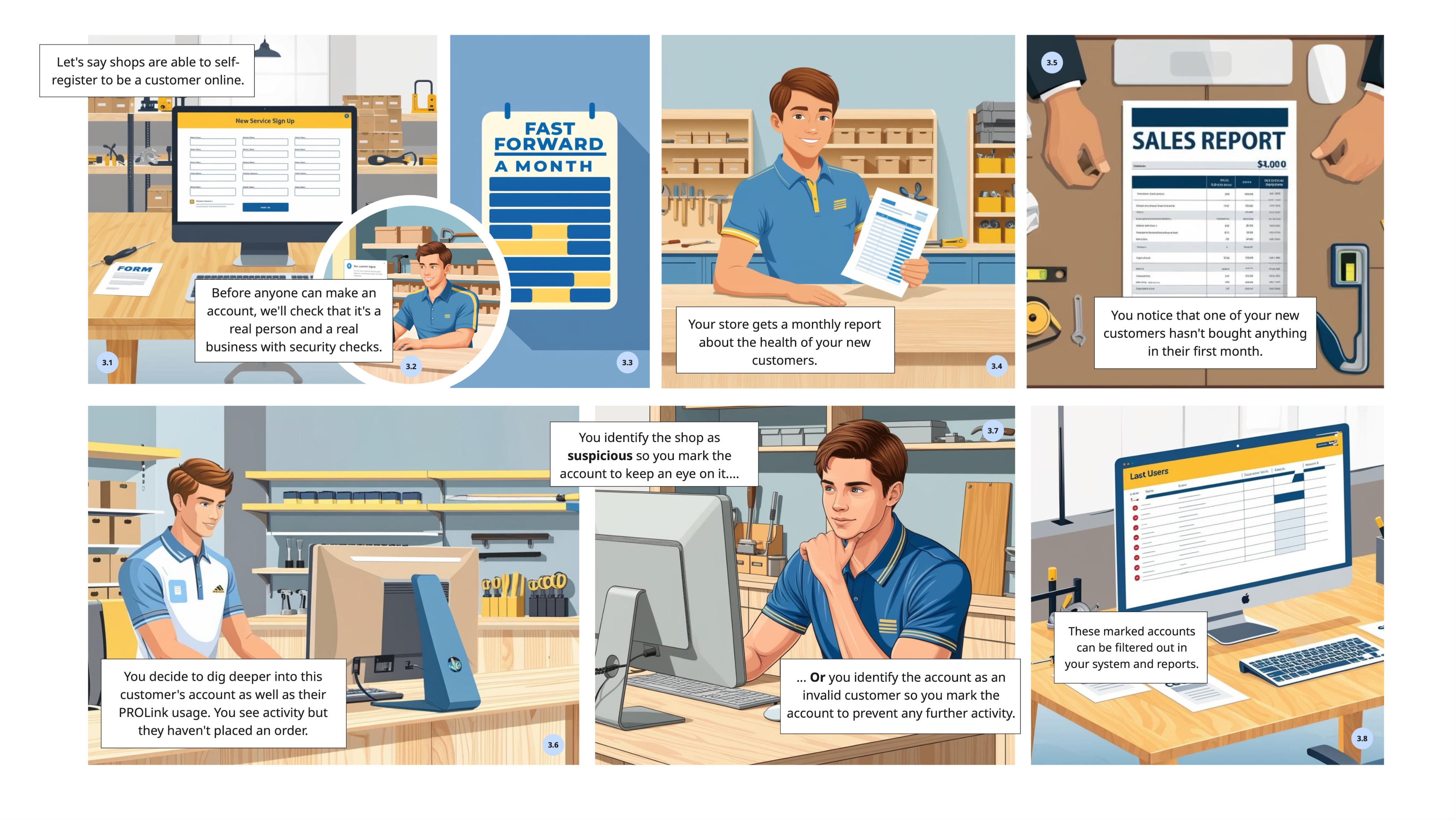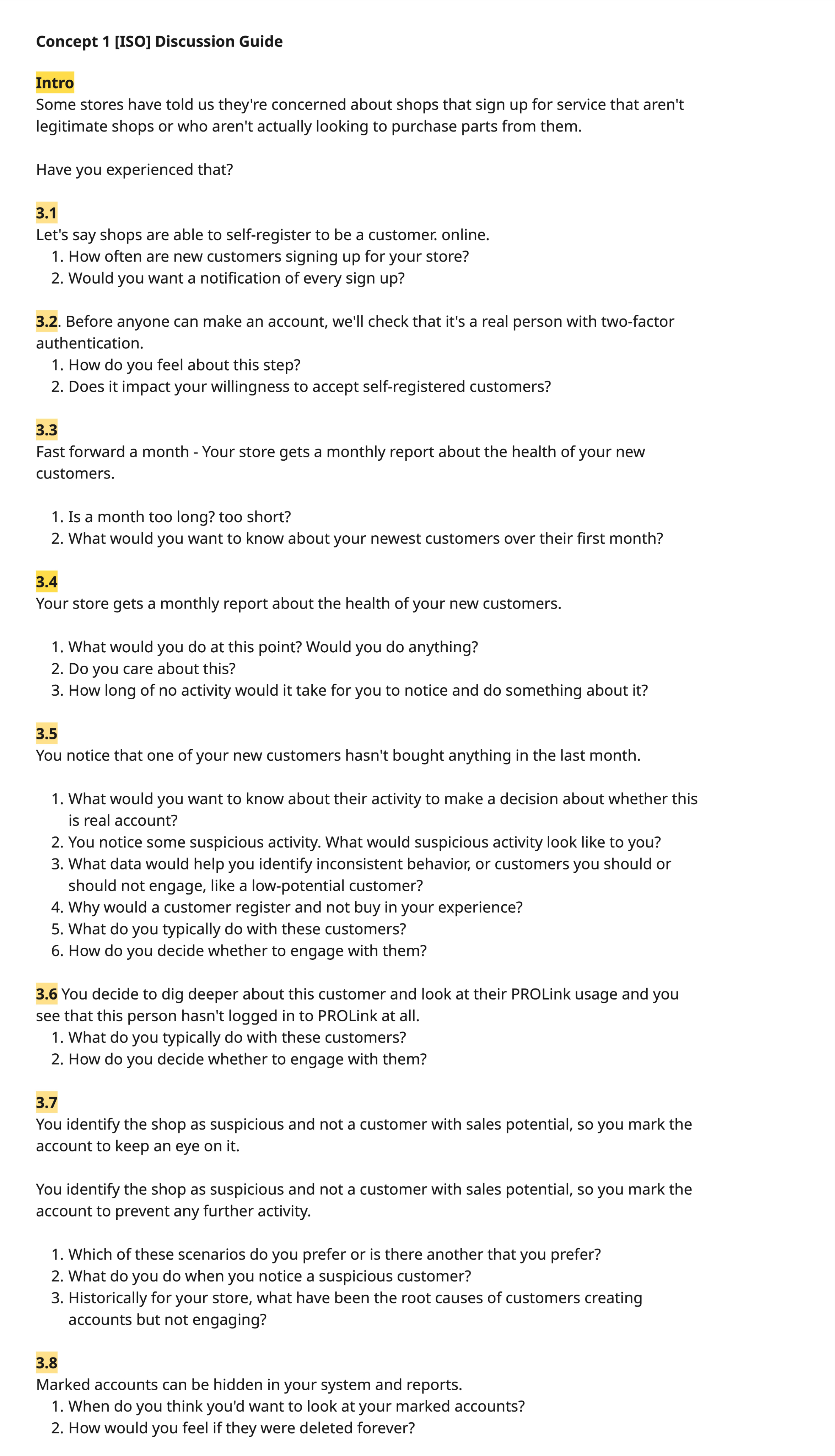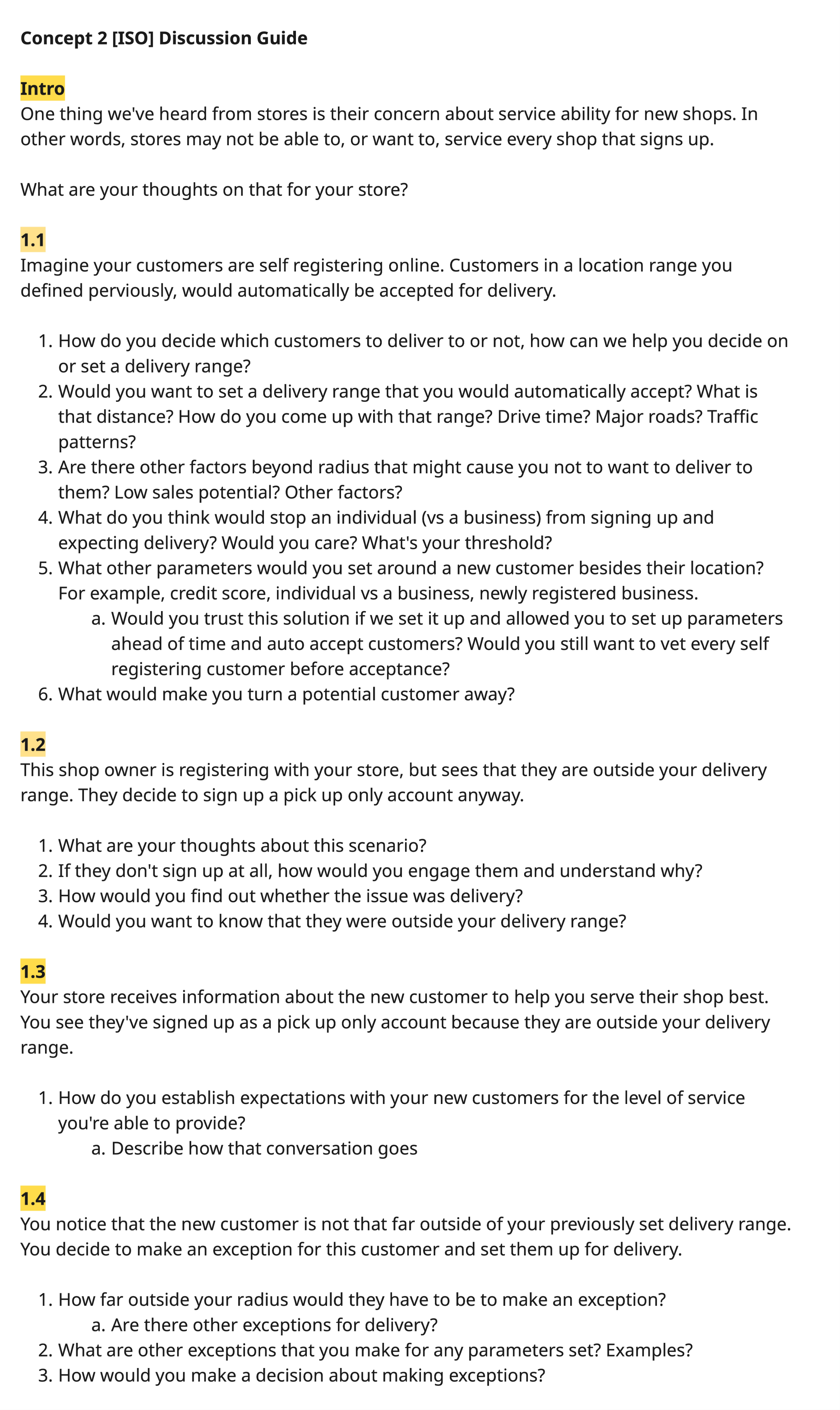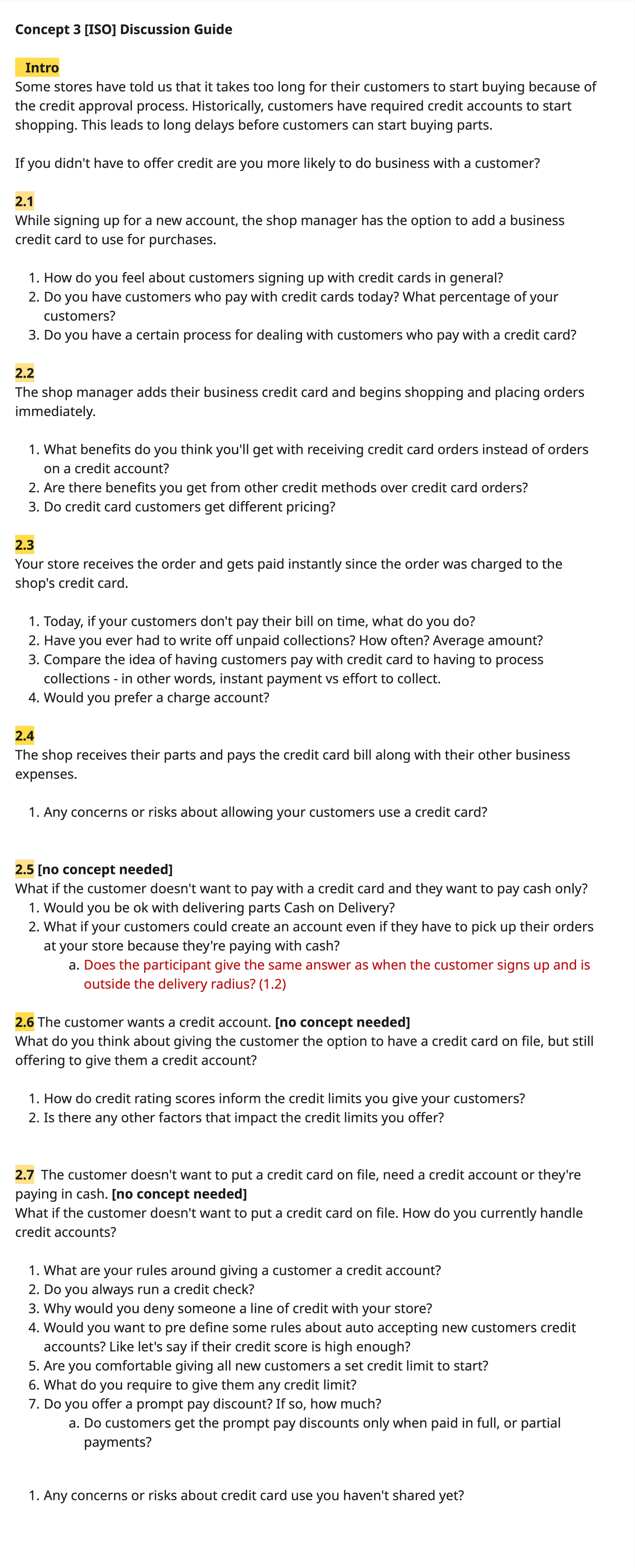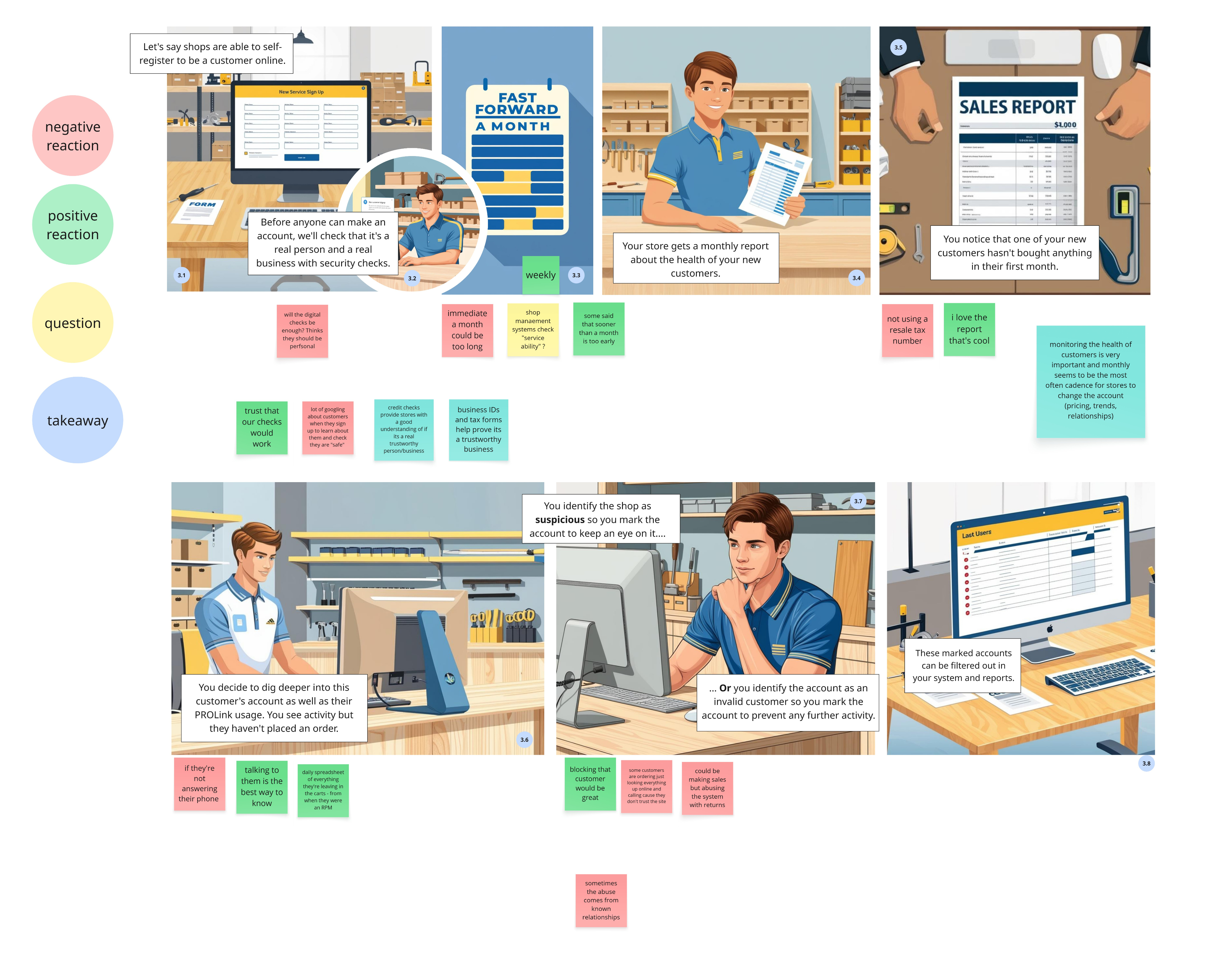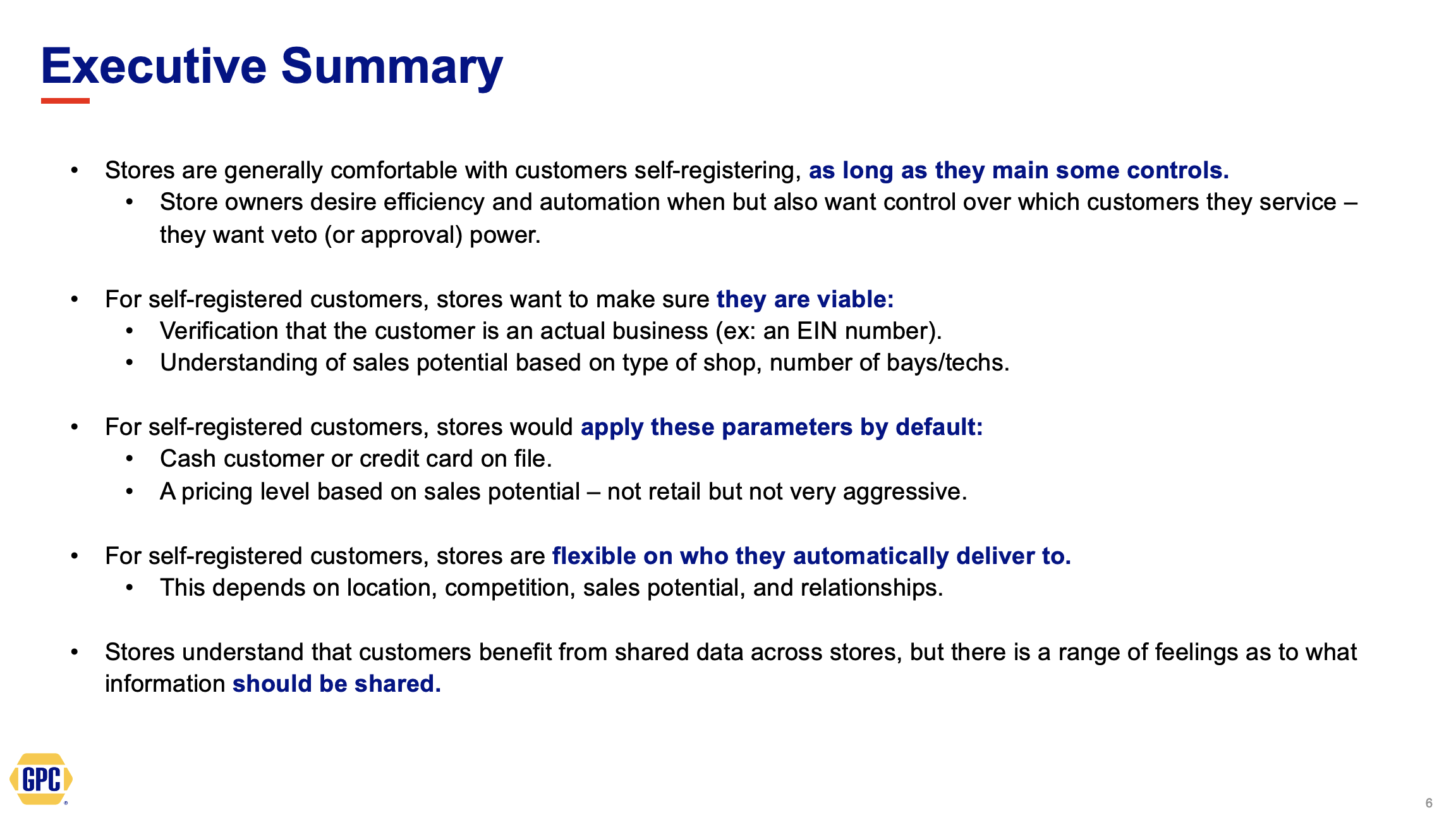Customer Management for NAPA Auto Parts Stores
NAPA's customers could be considered the driver and owner of a car that needs to be repaired. You could also call the shops that do the repairing and buying of the individual replacement parts, the customer. Our stores do more than just source the part for shops, they also acquire and manage shops that order from the store. They manage their customers.
Stores can be owned by a independent person, as well as store that is owned by NAPA corporate (Genuine Parts Company). Corporate stores have more built in relationships and standardizations, where the independent store owners are more free to do what works best for them. This means the independent store owners are more varied in their management styles, sales strategies and administration tasks.
NAPA wants to streamline the registration of repair shops into our system so it is easier and quicker to start a relationship with NAPA part stores. How might we create this streamlined process without alienating or upsetting our independent store owners who have their own processes when it comes to registration, and their individual relationships with their customers. How might we make sure we don't break their trust if HQ streamlines tasks these store owners would usually handle manually on their own?

